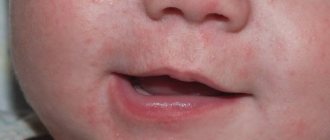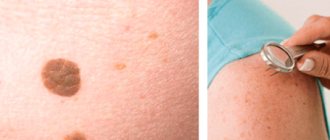- Home >
- Symptoms >
- Burning in the joints
A burning sensation in the joints (usually a burning pain) or in the skin above them occurs very often in many diseases, and not only rheumatological ones.
Sometimes it turns out that this is the first and even the only symptom, so it is worth paying attention to. What is this burning sensation anyway?
This is a kind of pain syndrome that is characteristic of inflammatory processes and acute circulatory disorders. The burning sensation may appear as if inside the joint, or it may be felt on the surface, that is, on the skin. Apart from burns/frostbite and similar situations, we rarely talk about the second option. In most cases, a burning sensation is still felt inside the joint. —>
At the MART clinic on Vasilyevsky Island
- Evidence-based medicine
- Experienced specialists
- Monitoring patients for 6 months
- Diagnostics (MRI, ultrasound, tests)
- Daily 8:00 – 22:00
Make an appointment
Burning sensation in different parts of the body. Causes of burning in the body
A burning sensation in the body does not always indicate a physiological process; it can, for example, be caused by an insect bite.
However, most often this is a sign of the presence of pathology in the body. Local symptoms include irritability and decreased performance. In most cases, burning in combination with other symptoms is a clinical manifestation of an allergic reaction, mycotic infection, helminthiasis and other diseases.
Below is a complete list of reasons that provoke the appearance of the symptom.
- A bite of an insect. At first glance, he is harmless. However, over time, severe swelling, redness, pain and itching may occur. Sometimes there is numbness and paralysis in the affected area.
- Excessive sun exposure. Irritation occurs when exposed to the sun for a long time during the period of its maximum activity.
- Exposure to aggressive substances (alkali, acid, household chemicals). Not only the epidermis is affected, but also the deeper layers of the skin. Ingestion of such substances causes a burn to the mucous membrane of the esophagus or stomach.
- Allergic reactions. In addition to burning, itching, rashes and redness of the skin are observed at the site of exposure to the provoking factor.
- Skin diseases (eczema, psoriasis, herpetic infection).
- Fungal skin infection. Burns and itches in the area where the fungal infection is located. If this is the genital area, it is worth suspecting a mycotic lesion of the vaginal mucosa or penis.
- Diseases of internal organs (diabetes, gout, vascular, thyroid pathology, jaundice).
- Nervous overstrain.
- Ulcerative lesions of the stomach and duodenum. A burning sensation appears on an empty stomach in the area where they are located.
- Helminthiases.
Burning sensation in the body during neurosis. Burning sensation and its origin
A burning sensation in the body and limbs manifests itself in the form of tingling, a sensation of heat, and “cookiness.” It is constantly present throughout the day or has a wave-like character, but, as a rule, does not bother you at night.
The appearance of this symptom is facilitated by damage to the peripheral nerves. This is observed, for example, in diabetes mellitus. In this case, the burning sensation is concentrated primarily in the extremities, followed by tingling and numbness.
Sciatica is an inflammation of the sciatic nerve, accompanied by “straininess” in the legs up to the foot.
With multiple sclerosis, the burning sensation is combined with tingling. Such an alliance extends to the limbs. One should be wary of their simultaneous occurrence with problems of speech and coordination.
Radiculopathy is damage to the nerve roots of the spinal nerves. In this case, a pathological feeling of heat also occurs in the arms and legs.
Dangerous is the appearance of a burning sensation in one half of the body. Along with other signs, such as incomprehensible speech, headache, blurred vision, delirium, hallucinations, it can be a sign of a stroke.
Heat in the legs often indicates vascular pathology.
Other conditions that can cause this sensation include:
- spider and snake bites;
- poisoning by chemical compounds;
- avitaminosis;
- calcium deficiency;
- burns.
Particular discomfort is caused by itching and “burning” in a woman’s intimate area (vagina, vulva and perineum).
A burning sensation in the vagina, along with dryness, are manifestations of menopausal changes or atrophic inflammation. If the cause of the burning sensation is various kinds of discharge, then this indicates candidiasis, inflammatory processes or sexually transmitted diseases. Moderate itching in the vaginal area may indicate an allergic reaction to latex or medications.
The discussed symptoms in the vulva (external genitalia) also appear against the background of sexually transmitted infections. Other reasons may be:
- lice;
- eczema and mycoses;
- tumor-like formations;
- helminthic infestations;
- kidney and liver diseases.
The perineum includes the area around the genitals and anus. The occurrence of unpleasant sensations in it indicates the presence of such conditions:
- helminthic infestations;
- allergy to powder or linen;
- haemorrhoids;
- rectal tumors;
- systemic diseases;
- sexual infections;
- herpes, candida;
- incorrect hygienic approach.
Diagnosis and treatment
If you consult a specialist with complaints of burning in the joints, the doctor will evaluate all other symptoms and medical history, and, based on the data received, will choose an individual diagnostic regimen. In any case, you will most likely need to have an x-ray of the joint, an ultrasound, and several laboratory tests. If a spinal lesion is suspected, an MRI may be ordered, and specific blood tests will be needed to diagnose systemic diseases.
If you have any questions, ask our specialist! Ask a Question
No one will specifically treat the burning sensation in the joints. Treatment will, of course, be aimed at the underlying disease, which will be determined after a thorough diagnosis. To reduce the inflammatory process and alleviate the patient's condition, non-steroidal anti-inflammatory drugs, classical analgesics and, of course, many physiotherapeutic techniques can be used. Particularly effective in this case:
- local exposure to ultrasound;
- magnetic therapy;
- pharmacopuncture.
Sign up at the MART medical center in St. Petersburg (see map) by calling 8 or leave a request on the website.
The whole body burns. Why do you feel a burning sensation?
This reaction of the body indicates that there is damage to the nerve fibers. Moreover, even with minor injury, a burning sensation on the skin will still appear in the place where the nerves were affected.
The most common lesions are in the legs, arms and face. And there are many factors that lead to this result:
Damage to the nervous system is one of the causes of burning skin and can only be treated under the guidance of a qualified physician.
Note. Burning skin on the legs can be caused by irritation of the sciatic nerve, and tingling in the arms is often a consequence of impaired blood circulation.
Background diseases
In some cases, the roots of unpleasant sensations go back to heredity. We are talking about disruptions in the functioning of genes that are responsible for the synthesis of nerve proteins. In this situation, you cannot do without professional diagnostics.
The causes and treatment of burning sensation in the feet should also be determined by a qualified doctor, since pain in the lower extremities can be a consequence of diabetes mellitus. Moreover, a person often feels healthy, only a burning sensation bothers him. In this state, the patient is unlikely to realize that his nerve fibers suffer from disturbances in glucose metabolism and disruptions in the blood circulation process.
Important! The causes of burning of the skin of the body sometimes lie in the pre-stroke condition. In this case, itching is also felt. Soon after the onset of such symptoms, numbness may occur, and then paralysis of the arms and legs.
Impaired blood flow can lead to the same symptoms in different parts of the body. In this case, numbness of a specific area of the skin is sometimes accompanied by the appearance of pale and bluish spots.
Important. Since burning of the skin can be a consequence of the development of a dangerous underlying disease, clinical diagnosis for such symptoms is necessary.
Pain from an allergic reaction or after a burn
With such a problem as burning of the skin of the body, the causes are sometimes worth looking for in the effect of the allergen on the patient’s body. Allergies are often accompanied by other symptoms that allow them to be quickly identified:
- sneezing;
- peeling;
- skin rash;
- redness;
- lacrimation.
Until the cause of the allergic reaction is eliminated, peeling and burning of the skin is unlikely to be neutralized even with the help of medications.
Another cause of discomfort is a burn. Damage of this kind is a consequence of exposure of the skin to a thermal or chemical irritant. It is accompanied by the appearance of blisters, redness and burning of the skin. The pain is felt constantly.
In addition to prolonged exposure to direct sunlight in hot weather, a tanning session with the wrong settings can also lead to burns. Aggressive household chemicals, as well as reagents, can damage the skin.
Important. If any dangerous product gets on the skin, you must quickly and thoroughly wash the skin, and then apply a cream with a soothing effect to the affected area.
Skin diseases and neurosis
Burning skin can be a consequence of diseases such as shingles, eczema and psoriasis. With these problems, a rash appears, as well as redness.
Such diseases cannot be neglected, otherwise you may encounter serious complications.
The negative impact of yeast should not be ruled out. If it affects the upper layer of the skin, the following symptoms are possible:
- itching and peeling of the epidermis;
- if the lesion occurs in the scalp area, then, in addition to severe itching, dry hair or, conversely, greasy hair will be noticeable;
- directly on the face, a burning sensation may be accompanied by redness;
Important. If you start a fungal disease, then there is a risk of sepsis.
Burning of the skin of the neck and other parts of the body can be caused by neurological and mental illnesses. A striking example is tactile hallucinosis syndrome. This is a form of mental disorder in which tactile hallucinations occur.
Burning of the skin during neurosis is explained by the fact that in this state the ratio of inhibitory and excitatory processes in the nervous system is disrupted. There is also a failure in the interaction between the subcortex and the cortex due to exposure to factors that traumatize the psyche.
An itching sensation sometimes occurs with trigeminal neuritis.
Content
- Causes
- Associated symptoms
- Diagnostics
- Treatment
- Conclusion
Burning sensation in the feet is a common complaint among patients, and before starting treatment, the doctor should understand the causes of the manifestation. Heat in the feet is not a cause, but a consequence. 30% of women and 20% of adult men experience these unpleasant sensations. The symptom can be caused by various diseases and pathologies, so you should not ignore the manifestations.
Wandering burning sensation in the body. Painful burning, burning pain: why they occur
Burning pain and burning occur in the abdomen, throat, limbs, chest, and other parts of the body for a variety of reasons. With such symptoms, self-diagnosis, as well as self-medication, can be disastrous. Be sure to visit a specialist, undergo the necessary examinations to determine the cause and subsequent proper treatment.
The pain and burning sensation in the chest that is familiar to almost everyone is immediately attributed to heart pain, although most often it is intercostal neuralgia. With it, burning, itching, and pain occur in the chest or abdomen, affecting half of the body, from the spine to the navel.
Burning and pain in the heart may indicate an attack of angina, which is a common form of coronary heart disease that can lead to a heart attack. Pain can also occur with a cold, myocarditis, myositis, rheumatism. If such symptoms appear after stress, they can signal vegetative-vascular dystonia or depression, and if unpleasant sensations are associated with food intake, they often act as a “mask” of a stomach or duodenal ulcer, gastritis, cholecystitis. If there is pain in the chest area, accompanied by blistering rashes between the ribs, herpes zoster is most likely diagnosed. With pericarditis, painful sensations are accompanied by high fever and symptoms of intoxication. The devastating disease aortic dissection can occur after an attack of hypertension or chest trauma.
If neuropathy affects the median or ulnar nerve, unpleasant sensations appear in the palm, shooting from the elbow to the palm, burning and pain in the hand occur.
Pain and burning in the abdomen are the most obvious signs of gastric neurosis. Various factors can awaken it: strong coffee, cigarettes, painkillers.
Lower back pain and burning sometimes appear from stress on the spine, stress, obesity, and unbalanced nutrition. A mild illness can be cured quickly, but there are more serious diagnoses:
- Osteochondrosis, which disrupts the balance in the structure of the spinal column. The pain is constant and not severe. It only gets worse occasionally.
- Muscle spasm that occurs with constant physical activity and is characterized by acute pain.
- Intervertebral disc herniation. The pain often intensifies when laughing, coughing, sneezing, or bending over. This disease is popularly called radiculitis. Usually, when you take a horizontal position, the pain subsides.
- Spinal instability. Pain occurs during physical activity and standing for long periods of time, and is often accompanied by a feeling of fatigue.
- Narrow spinal canal. With this disease, the pain does not stop in any possible position.
Pain and burning in the throat have many causes, not necessarily related to ENT diseases. Of course, the number one cause is colds. But there are others:
- Fungi or viruses on the tonsils, gonorrheal tonsillitis.
- Thyroid diseases.
- Neurosis of the pharynx.
- Reflux esophagitis.
- The most dangerous cause may be laryngeal cancer.
Diabetic polyneuropathy is characterized by pain and burning in the back and feet. The disease can result in atrophy of the limbs. The disease usually progresses quickly, and the nerve endings of the lower extremities and blood vessels begin to die. The required amount of blood does not flow to the legs, which causes muscle and skin cells to gradually die. This is fraught with amputation and gangrene. The final stage of the disease may be blood poisoning (sepsis). This disease is extremely difficult to treat.
Burning sensation under the left shoulder blade
Usually people do not consider the burning sensation in the shoulder blades to be something serious and resort to self-medication. But it is important to understand that pain under the shoulder blade is just a sign that may indicate some serious health problem.
Causes of burning associated with back diseases
Most often, a burning sensation under the left shoulder blade indicates problems with the muscles located along the length of the spinal column, spinal disease
or the back in general, namely:
- osteochondrosis;
- arthrosis;
- scoliosis of the thoracic region;
- hernias between the vertebrae;
- blood stagnation in the muscles;
- scapular-costal syndrome;
- intercostal neuralgia;
- kyphosis of the thoracic region of the back.
These pathologies are a consequence of regular back overload. Reasons: incorrectly selected shoes, sedentary lifestyle, excess body weight, overexertion due to physical activity, drafts.
Most often, the burning sensation appears periodically and disappears over time.
Patients feel discomfort because they themselves incorrectly distribute the load from the damaged part of the back to the healthy part. Therefore, the root of the burning sensation does not go away, and overstrain begins to be felt in all muscles, including healthy ones. The nerve endings in the muscles become excited, and chronic pain appears.
Causes of burning associated with other pathologies
Pain and burning sensations in the scapular area can be the result of a variety of problems with internal organs. For example:
- heart diseases;
- lung pathologies;
- failure of the liver;
- deformation of ligaments and joints;
- infectious diseases of the skin and nerve endings;
- pathology or inflammation in the kidneys;
- stomach ulcer.
Pain may appear and vary due to changes in body position, muscle tension or other factors, for example, after eating. Also, a burning sensation in the back may appear after an incorrectly performed massage.
Diagnostics
From the above, it becomes clear that it is almost impossible to accurately indicate the cause of a burning sensation under the shoulder blade at home. To obtain an accurate diagnosis or to exclude diseases of internal organs from the list of possible pathologies, it is necessary to undergo a medical examination. You will not have to visit a single specialist. To be sure of the diagnosis, it is better not to save time and contact a cardiologist, pulmonologist, gastroenterologist, or traumatologist. Each of these doctors, after conducting examinations, will tell you whether there is cause for concern.
You can try to find out the possible cause of the burning sensation by the type of pain:
- If the pain is dull and nagging, then you may be developing osteochondrosis.
- With pathologies of the lungs, there is a pressing sensation.
- In case of kidney diseases - pulling.
- If the cause of the burning sensation is heart disease, then, in addition to the burning sensation, a pressing sensation is felt in the back of the sternum. Such pain is usually localized on the right and occurs in attacks.
- If the burning sensation is accompanied by numbness in the arms and hands, then most likely the cause is a pinched nerve.
To determine the exact causes of discomfort, it may be necessary to undergo the following examinations:
- UAC and OAM;
- blood test for platelet count;
- multi-angle x-ray of the upper dorsal region;
- Ultrasound of the gastrointestinal tract;
- MRI;
- heart cardiogram;
- fluorography.
Having all the necessary information, specialists will be able to accurately determine the causes of discomfort, prescribe effective treatment and recommend preventive measures.
Treatment
It is important to understand that by getting rid of the discomfort under the shoulder blade, you will put an end to the symptom, but the problem itself will remain and, as it progresses, can lead to more serious consequences.
To get rid of discomfort in the scapular region, physiotherapy and medication are most often used. However, the best option is therapeutic exercises.
Medicines used for burning under the shoulder blade are in most cases non-steroidal drugs that fight inflammation and are painkillers.
The physiotherapeutic method is characterized by speed of action, the effect of it will appear more quickly if it is combined with doing exercises and taking medications. The doctor may prescribe the following procedures:
- ultrasound treatment;
- novocaine electrophoresis;
- treatment using a magnetic field;
- shock waves;
- acupuncture;
- professional massage;
- manual therapy.
The best remedy for pain under the shoulder blade is arm swings. If your type of activity involves sedentary work, then it is better to repeat this exercise more often. Since it is stagnation of blood in the muscles that is the most common cause of burning sensations in the dorsal region.
Prevention
To avoid discomfort under the shoulder blade, as well as other pain in the back, following these rules will help:
- You should not overuse salty foods and coffee, as they interfere with the process of moisture exchange.
- Drink more fluids and eat more fresh vegetables.
- Stay positive and try to avoid stress.
- Don't neglect exercise;
- Alternate mental activity and active rest.
- Sleep on a comfortable, not too soft mattress.
- Lift weights correctly (do not bend, but squat).
- Maintain a straight posture and keep your back straight.
- Do not make sudden bends, movements or turns.
- Wear comfortable shoes with low heels.
- Visit doctors in a timely manner and undergo medical examinations.
If you change your lifestyle, taking into account the advice of specialists, you can reduce the risk of pain in the back and behind the sternum.
Author: K.M.N., Academician of the Russian Academy of Medical Sciences M.A. Bobyr
It burns and tingles all over the body. Tingling all over the body: treatment
If these sensations appear infrequently and go away on their own after changing body position or light warm-up, then there is no need to worry. But in cases where tingling throughout the body appears for no apparent reason, the sensation of pins and needles appears in one place or another, or some part of the body goes numb, it is necessary to begin treatment. It should be prescribed by a doctor after a thorough examination and determination of the cause of the ailment. But before that, you can try to relieve the discomfort yourself:
• If there is numbness due to an uncomfortable posture, you need to improve blood circulation through exercises. It is best to make several slow circular movements with your head, stretch the muscles of your arms and legs, and rub the numb area of your body.
• If tingling throughout the body is accompanied by itching, redness of the skin or burning, then this may be an allergic reaction. In this case, antihistamines will help.
• For tingling caused by nervous disorders or mental stress, sedatives are indicated.
• Unpleasant sensations in certain areas of the skin can be relieved using a cream or ointment with a cooling effect. A cold shower or ice cubes have a similar effect.
• Tingling in the hands caused by carpal tunnel syndrome is treated with anti-inflammatory drugs or drugs that improve blood circulation.
If the cause of paresthesia is determined, the doctor prescribes special treatment. Usually this is the prescription of B vitamins, antioxidants, as well as drugs that improve blood circulation and reduce blood viscosity. Treatment for tingling throughout the body may include:
• Drug therapy: “Finlepsin”, “Piracetam”, “Cavinton”, “Nootropil”, “Actovegin”, “Mexidol”, “Trental”, “Magne B6”, drugs containing gingko biloba extract and other drugs.
• Physiotherapy: electrophoresis, diadynamic currents, mud therapy, acupuncture, darsonvalization, magnetic therapy and massage.
• Traditional medicine for the treatment of paresthesia suggests drinking infusions of horse chestnut and parsley fruits, birch leaves, sweet clover herb, nettle, goldenrod, viburnum peel and willow bark.
Any therapy should be used only after a doctor's prescription. You cannot take any medications or herbal decoctions on your own. Almost all of them affect blood vessels and the circulatory system. After all, it is possible that tingling throughout the body is not caused by these reasons. And any medications can only worsen the situation.
If the examination does not reveal any serious abnormalities in the state of health, then tingling throughout the body is caused by an incorrect lifestyle. To prevent these unpleasant sensations from occurring, you need to change your behavior habits and establish proper nutrition.
What can you do to stop the tingling sensations from appearing again?
• Do not stay in one position for a long time. It is recommended to change body position 10-20 times over an hour. If the work involves monotonous movements, it is advisable to take a short break every 15-20 minutes to warm up.
• Do not wear tight clothing that constricts the body. It is desirable that its style does not restrict movement, and that the material is natural. It is worth giving up tight belts and narrow shoes.
• You need to constantly monitor your posture, do not sit with your legs crossed and do gymnastics for your spine.
• In cold weather, you need to dress warmly to prevent hypothermia of your extremities.
• You can improve blood circulation through massage or yoga. It is advisable to visit the gym or swimming pool at least once a week.
Why does itching and tingling occur throughout the body? What diseases cause the body to itch and prick like needles? Treatment and prevention of tingling and itching of the body.
Paresthesia is a common condition when the body tingles like needles all over the surface and the skin itches. More often it is situational in nature, but can become an external manifestation of systemic diseases.
In the first case, the tingling effect quickly passes and does not recur; in the second, the feeling of discomfort is long-lasting and regularly repeated. This circumstance should be sufficient reason to consult a doctor.










